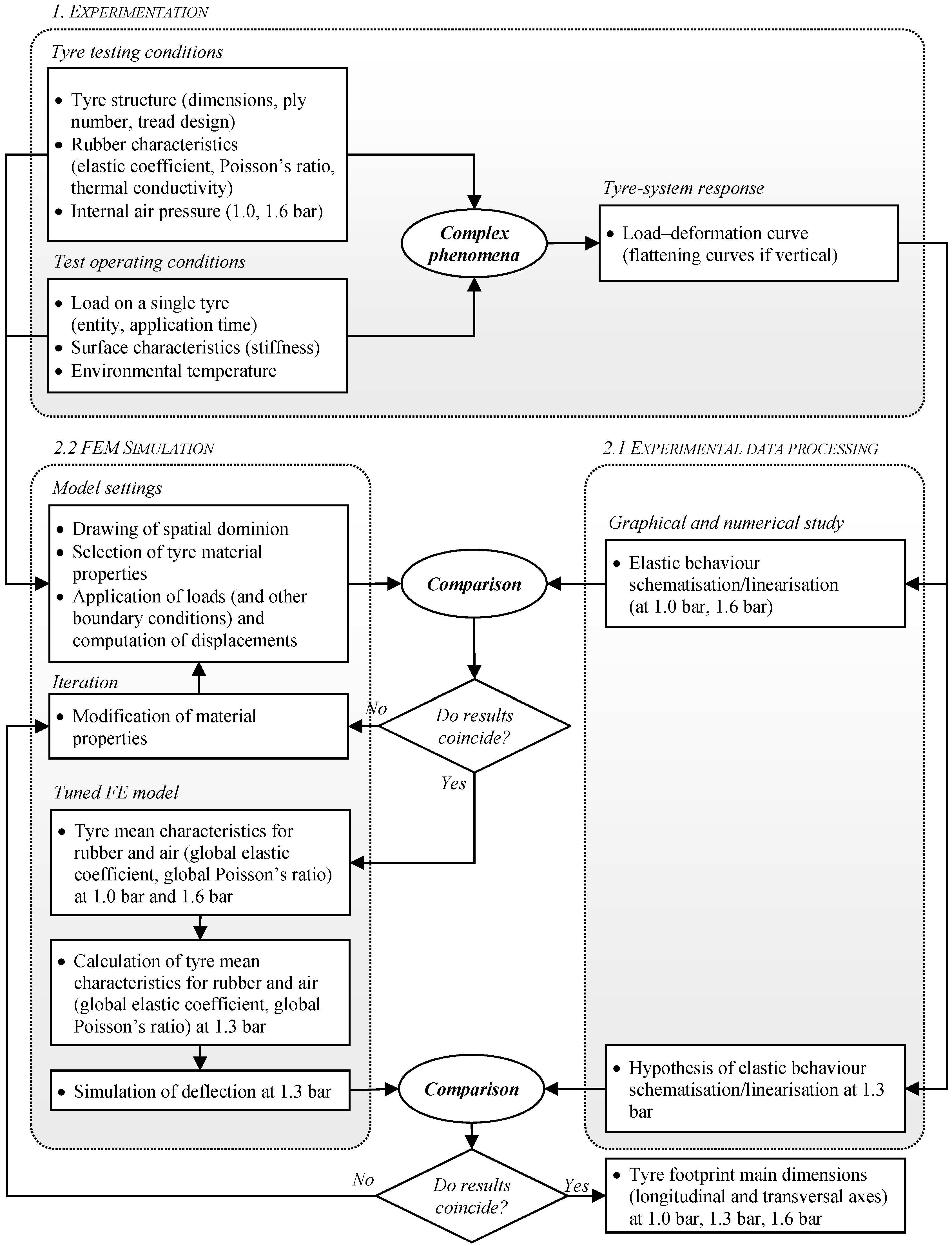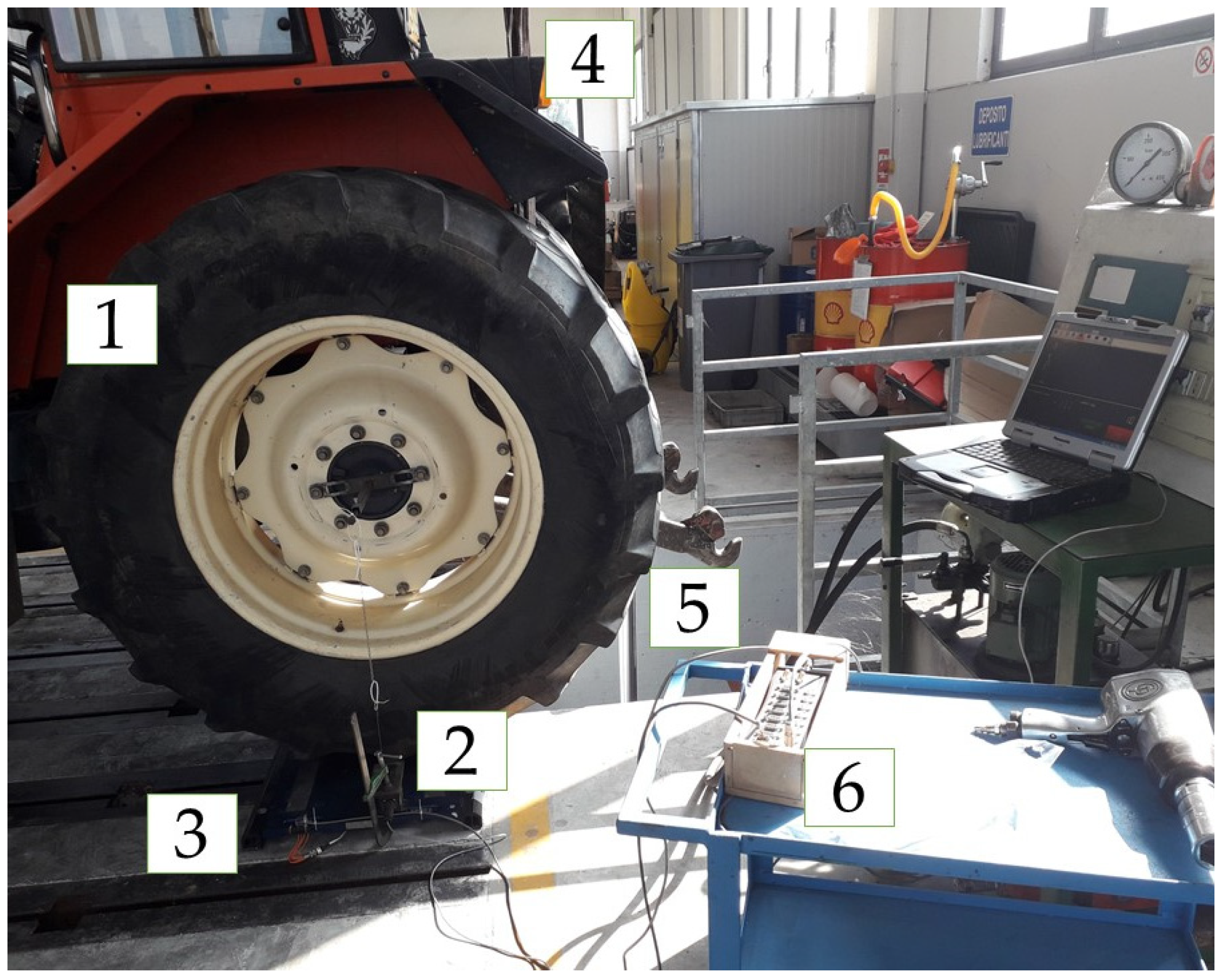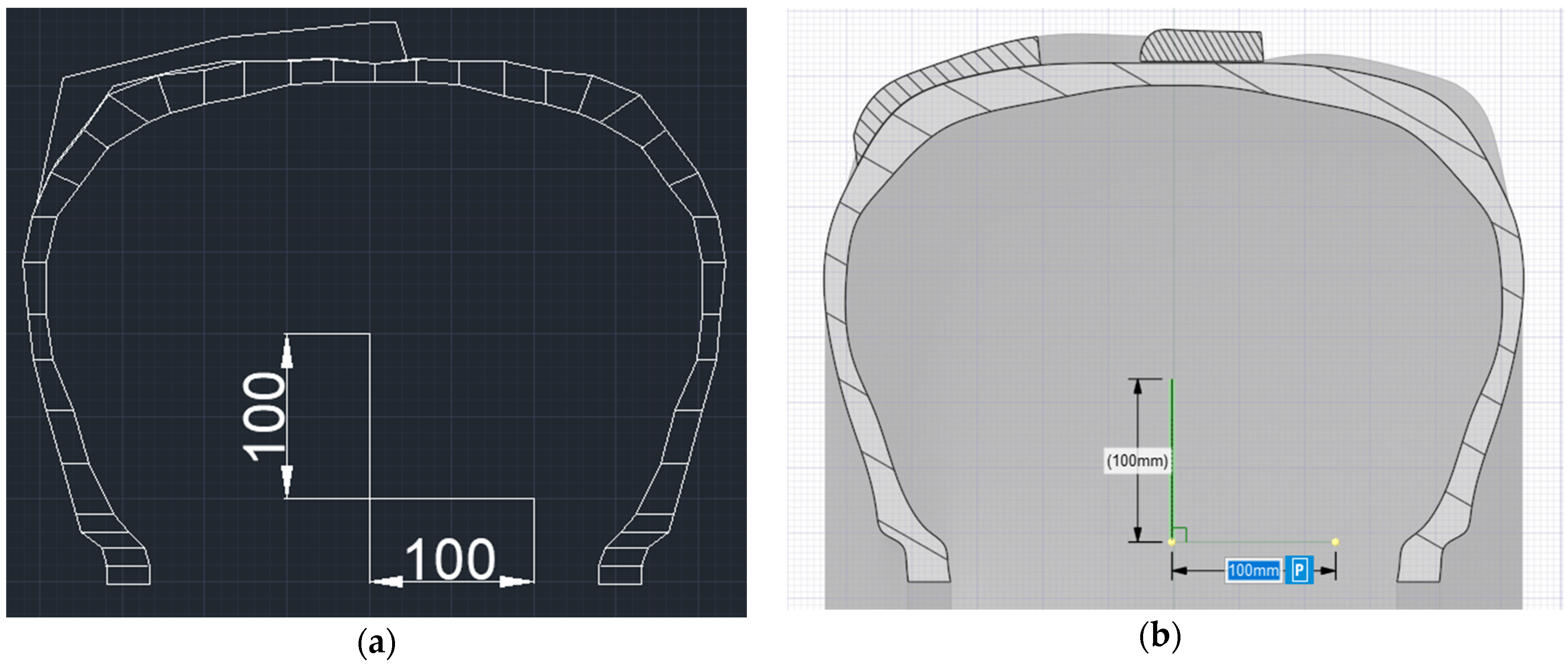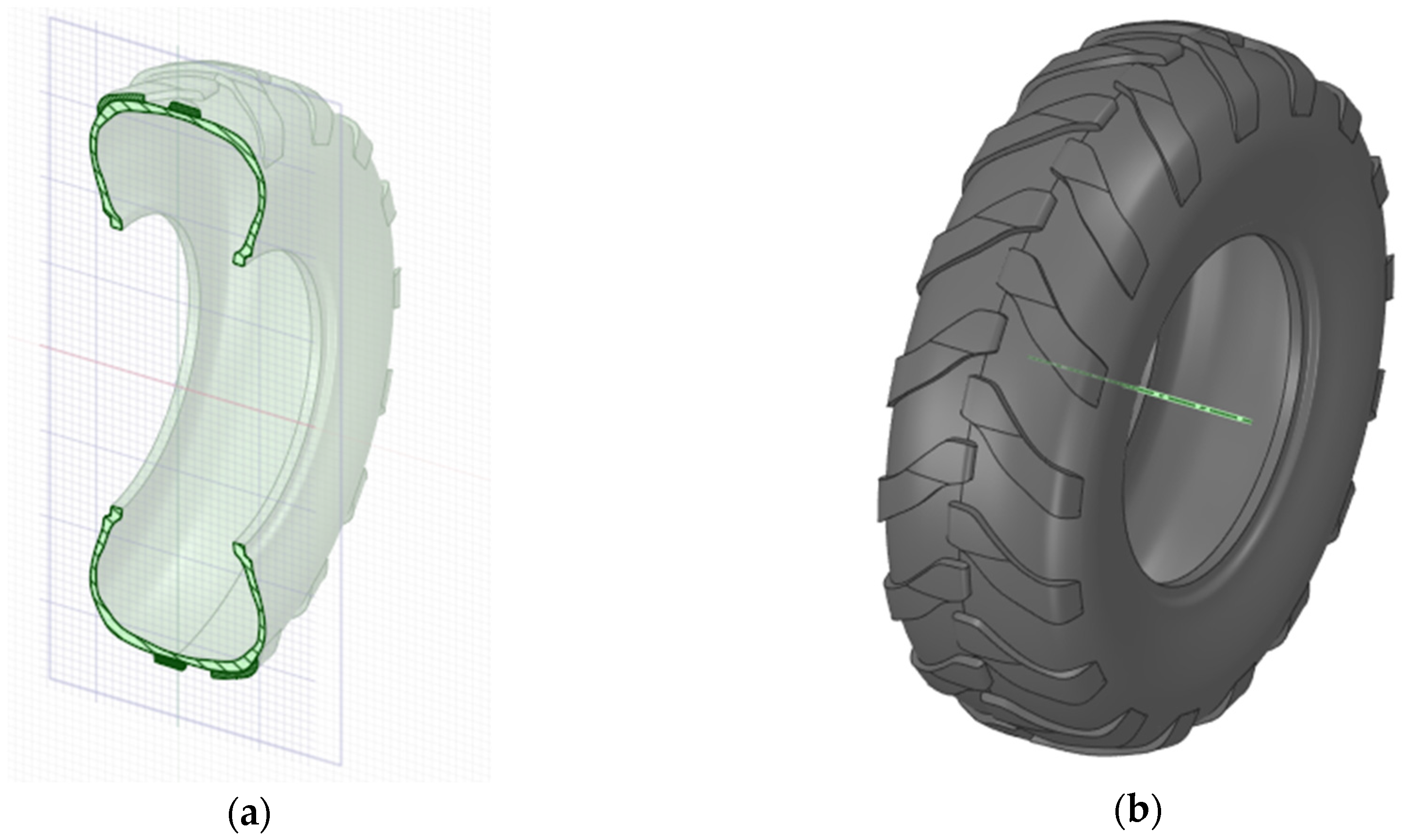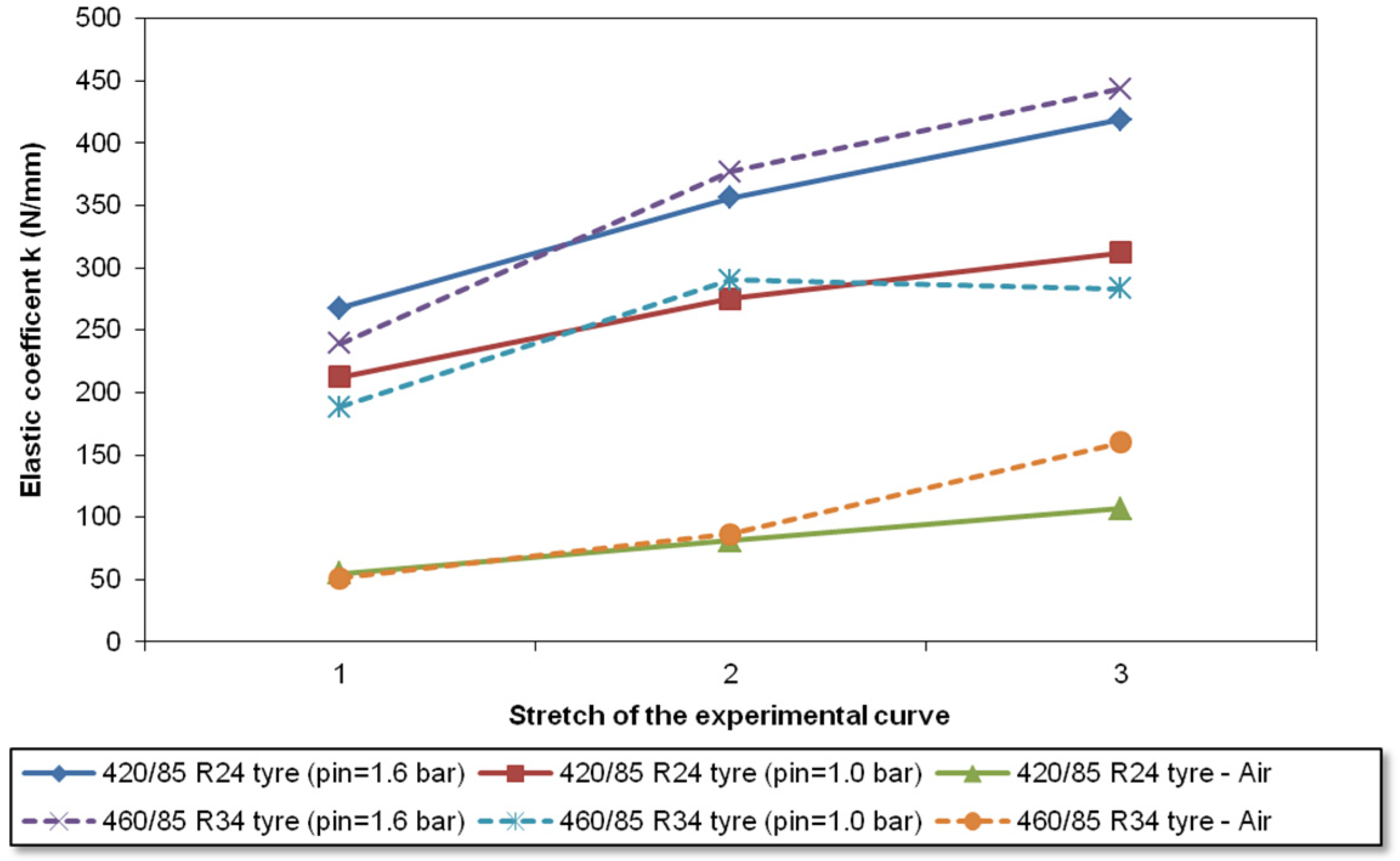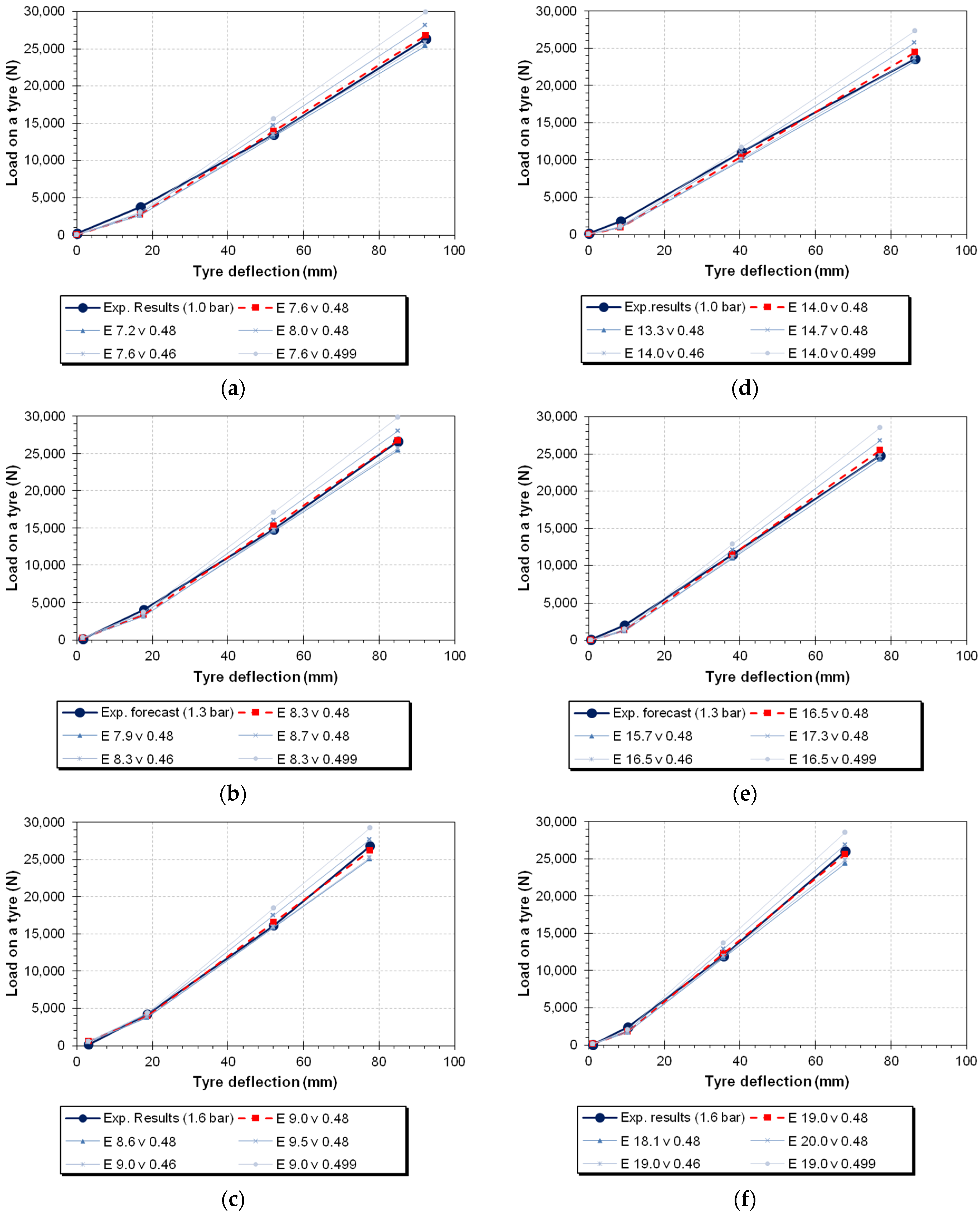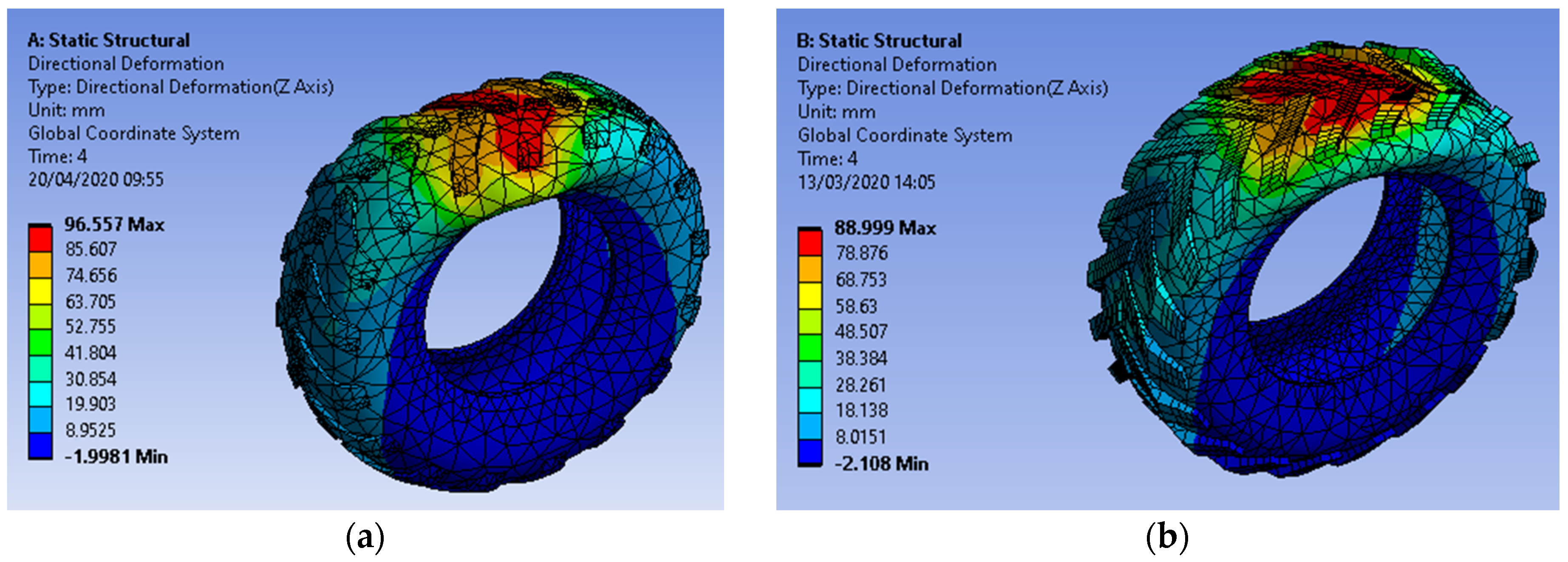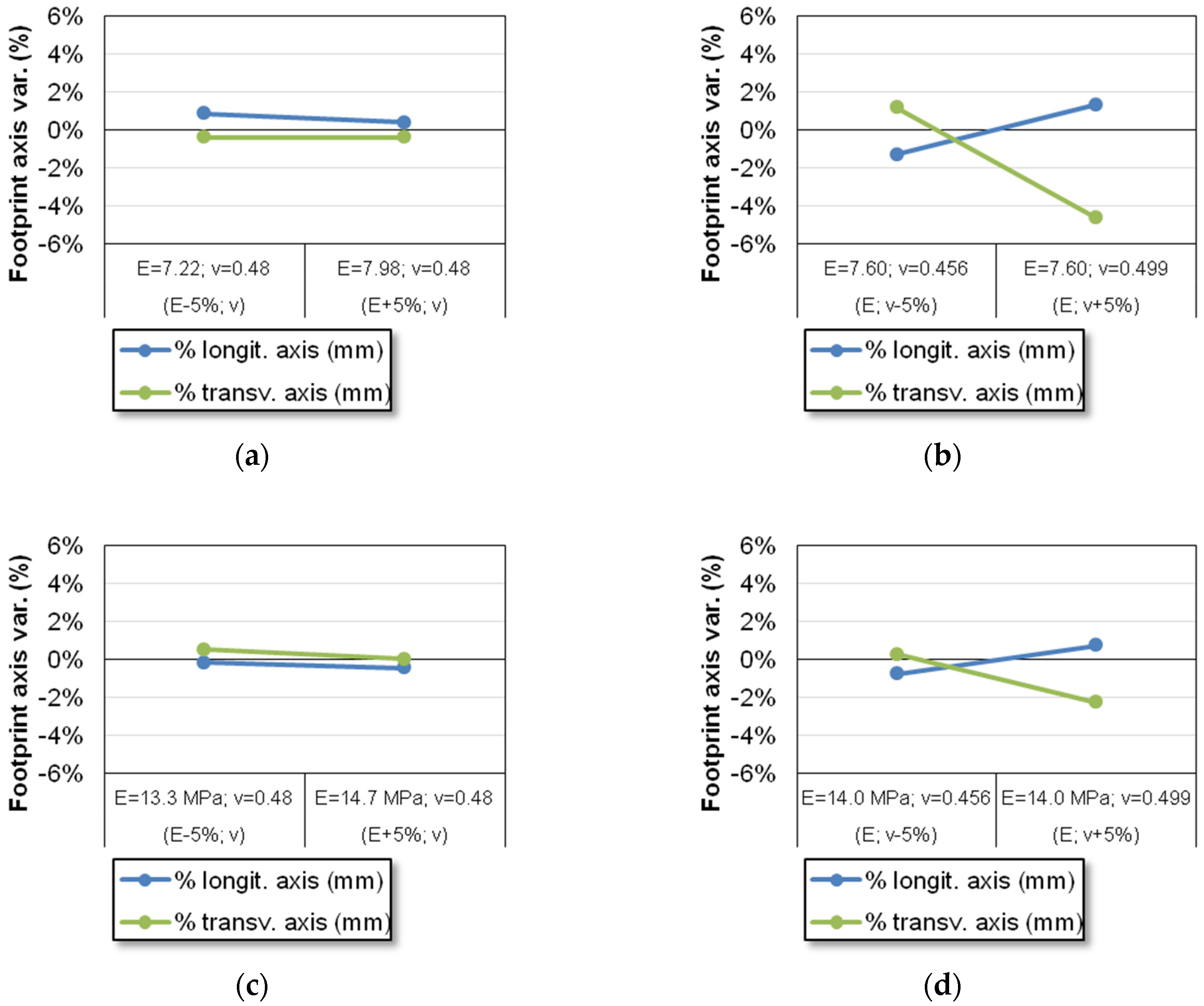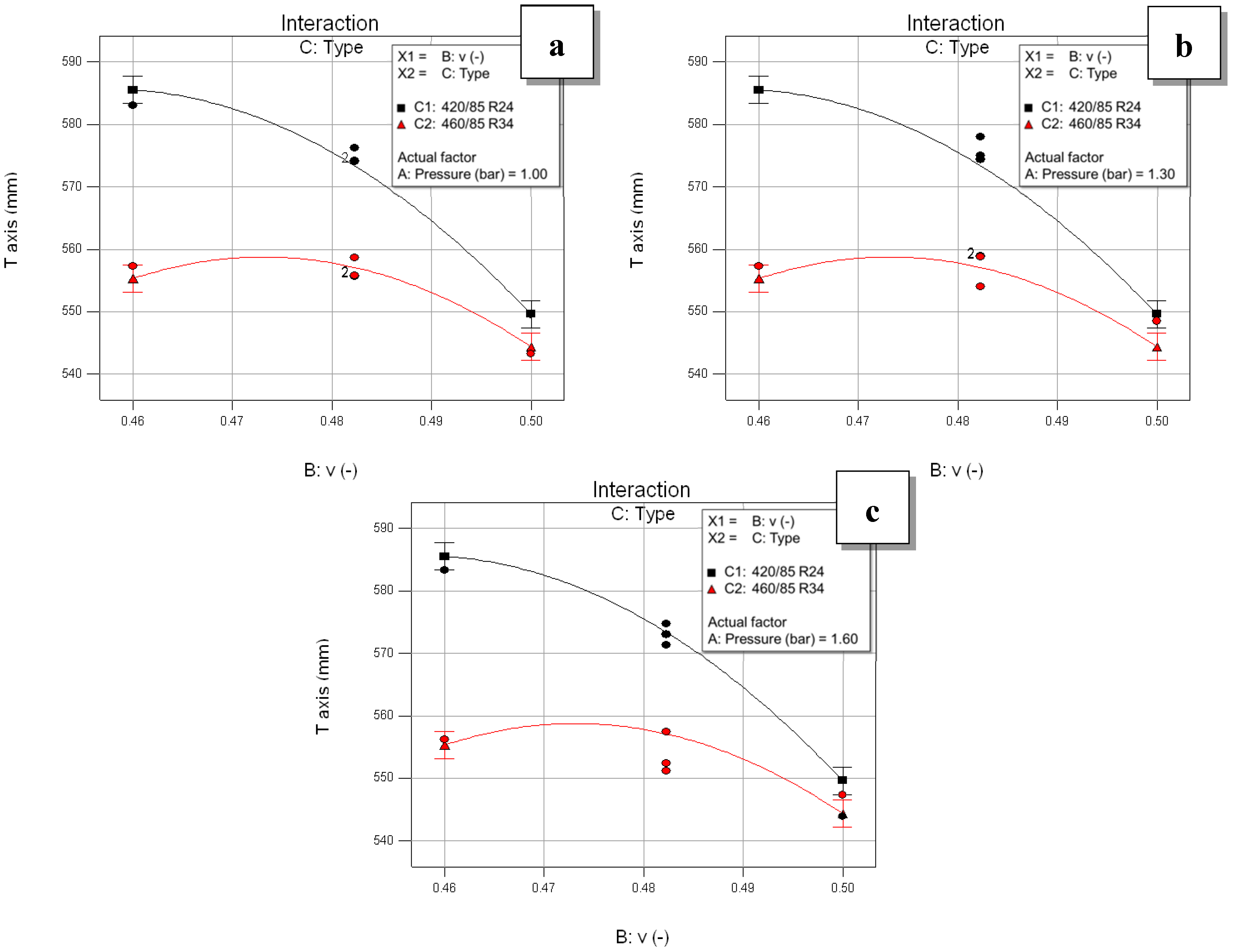In recent decades, agriculture has faced a gradual transition towards higher working speeds for all machines involved and greater use of transport-oriented farm tractors, due to a constantly-increasing demand for higher productivities and lower costs. This change raises lots of issues for many technical systems of agricultural vehicles. In particular,
agricultural tyres are the mechanical interfaces by which the engine power of wheeled tractors is delivered to the ground, enabling a vehicle to travel safely and to perform its tasks. Therefore, tyres need to retain a high level of efficiency and effectiveness both in the field and on the road. There are several aspects involved, from the capability for the tyres to limit energy waste while rolling (
efficiency), to the capability of accomplishing successfully the tasks for which they are intended and/or which they are requested to complete (
effectiveness). In this regard, the most important technical demands concern the conciliation of two only-apparently antithetical aspects involving the tyres: the safety and the performance of the vehicle when it operates both on the road and in the field. As regards
safety, intended as the preservation of a safe situation despite the presence of an elastic medium such as tyres, vehicle stability remains a very relevant topic [
1], as well as the comfort for professional operators, intended as the mitigation of whole-body vibrations and the protection of workers from correlated occupational diseases [
2]. As regards
performance, the focus is, in this case, on the maximization of adherence to the road, of traction in the field, and the limitation of soil compaction. The necessary premise is the knowledge of the deformation of the tyre in correspondence to the contact area with the ground, e.g., detected by making use of laser sensors in a purely-experimental approach [
3]. Apart from the instrumentation, the same article [
3] also reports an interesting fact that is indicative of the complexity of the phenomenon: tyre deformation due to contact with the ground affects not only the footprint area (±40° from the centre of the footprint) but also other parts close to it (up to ±140°). Other studies have also highlighted the need to consider the many operative conditions in order to gain a clear understanding of tyre performance. For example, the importance of inflation pressure on adhesion and slippage was investigated in [
4] and [
5,
6], respectively. The control of these parameters has a fundamental role in tyre and vehicle performances and in fuel consumption [
7], especially for large towed vehicles [
8,
9,
10], and thus reduces energy loss, which is crucial for agriculture [
11,
12,
13,
14]. A centralized system to control the inflation pressure of agricultural tractor tyres according to the soil and working conditions was developed and tested in [
15], and a wireless power charger for the pressure sensors was the object of another recent contribution [
16]. The tyre pressure can also be identified using 3-axis accelerometers and by exploiting the relationship between tyre pressure and characteristic frequency of the rim, as explained in [
17].
The most widespread approach that emerges from the literature, in this case, is to make use of the geometrical characteristics and of the constitutive equations of the materials of the bodies in contact (e.g., using the values of the coefficients regarding the tyre materials collected in [
18]). For example, in [
19,
20], a model for the prediction of tyre traction capability from a series of geometrical and elastic tyre properties, soil characteristics and slippage is presented. Other authors use a similar approach to identify a correlation between the nominal characteristics of tyres and their two-dimensional footprint (2D), considering the tyre footprint on a rigid surface [
21,
22]. However, 3D models of the whole wheel also have been developed to further deepen the knowledge about the soil-compaction phenomenon [
23] and to develop some indexes that, taking account of both the contact area and the volume of soil involved in the footprint, can be related to the compaction and traction behaviour of a considered tyre [
24,
25]. Moreover, the technological evolution of the tyre structure brought about by the “improved flexion” and “very high flexion” tyres (namely, IF and VF tyres) and the concept of new tread profiles, different from classic ones, confirm the importance of continuing to improve the modelling of agricultural tyres to deepen the knowledge of their operative behaviour. An accurate study of the tyre vertical dynamics and, hence, of the vehicle dynamics, can require models of agricultural tyres that are more complex than a damper-spring system [
26,
27], but which can also take into account the elastic, mechanical and geometric properties. This approach is present in the recent scientific literature concerning the automotive [
28,
29] and, especially, in all the works using simulation software to study the driveability of the vehicle in order to develop Advanced Driver-Assistance Systems (ADAS). The main properties regarding on-road tyre performances (e.g., longitudinal, lateral forces or self-aligning moment) can be expressed by the so-called “magic formula”, an empirical model proposed by Hans B. Pacejka, commonly used to simulate steady-state tyre forces. The magic formula can be applied whatever the structure of the wheel: indeed, it has also been applied to a mechanical elastic wheel (ME-Wheel) for an off-road vehicle to set up an integrated yaw and rollover stability control [
30]. However, it is also necessary to consider the geometry and mechanical properties of the tyres when developing models of agricultural vehicle aimed at studying both stability [
31,
32], and traction and soil compacting [
33,
34]. To this end, the approach based on a tyre equipped with strain sensors, also known as “Intelligent Tyre”, seems particularly promising, thus allowing relevant vehicle dynamics information to be provided [
35]. In order to simulate the behaviour of an agricultural tyre, the finite elements method (FEM) has been hence considered the most appropriate, e.g., for studying deformation of an off-road tyre based on experimental results of characterization of the material [
36,
37]. The influence of tyre pressure on the deformations of an agricultural tractor wheel has been studied in [
38] by means of a plane-symmetric FE model of the tyre in the frontal plane. A more detailed 3D FE model was used in [
36]; this detailed multi-component model accurately reproduces the real structure of the tyre with its tread, inner fabric, carcass, sidewalls, circumferential and radial cords and bead cores. The modelling of the interaction of a tractor tyre with the soil surface also requires a high detail of this last, if the aim is to analyse the contact pressure distribution for several wheel loads and tyre inflation pressures, as in [
39,
40]. In these cases, the soil structure has been modelled through a multilayered mesh with its attributes corresponding to the soil properties, and, the tyre–soil interface pressures having been validated by equipping a tyre thread with six miniature pressure transducers [
39] or by using proper lab equipment [
40].
The aim of this work is to study the elastic behaviour of an agricultural tractor tyre under a vertical load to identify which physical parameters (inflation pressure, mechanical characteristics of the tyre, geometry and dimensions) most influence the overall elastic coefficients of the tyre. In addition, the mathematical development of the global elastic force-vertical displacement response has been investigated to determine whether this development can be considered linear, linear in stretches or non-linear. In particular, the proposed approach does not require any preliminary destructive inspection of the tyre structure and it is based on the vertical elastic characterisation of the tyre in the laboratory, the mathematical statistical analysis of the tyre elastic coefficients and the subsequent creation of an FE model to develop a structurally-homogeneous three-dimensional model which exhibits the same deformation of the corresponding real system (i.e., the same flattening). Such a tuned model is useful for predicting the main footprint dimensions and for any simulation including this elastic medium, e.g., to foresee the soil compaction or calculate the attitude of a vehicle on uneven or inclined grounds. Finally, the response surface methodology was applied to find two mathematical regression models by means of ANOVA tests, useful in studying the variations of the tyre footprint dimensions while varying the tyre type.
